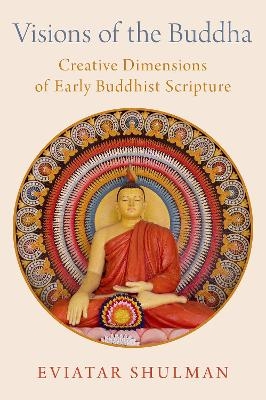
Visions of the Buddha
Oxford University Press Inc (Verlag)
978-0-19-758786-7 (ISBN)
Eviatar Shulman frames the early discourses as literary masterpieces that helped Buddhism achieve the wonderful success it has obtained. Much of the discourses' masterful storytelling was achieved through a technique of composition defined here as the play of formulas. In the oral literature of early Buddhism, texts were composed of formulas, which are repeated within and between texts. Shulman argues that the formulas are the real texts of Buddhism, and are primary to full discourses. Shaping texts through the play of formulas balances conservative and innovative tendencies within the tradition, making room for creativity within accepted forms and patterns. The texts we find today are thus versions--remnants--chosen by history of a much more vibrant and dynamic creative process.
Eviatar Shulman teaches in the Departments for Religious Studies and Asian Studies at the Hebrew University of Jerusalem.
Preface
I. THE LITERARY APPROACH TO THE EARLY DISCOURSES
1. Introduction: Rereading the Udumbarika-sutta
A First Textual Analysis: Why the Udumbarika-sutta?
The Formulaic Opening of the Mahasakuludayi-sutta as a Literary Preamble to the Udumbarika
The Opening of the Pali Udumbarika-sutta
The Philosophy of the Udumbarika
Versions of the Udumbarika-sutta
Conclusion
2. Literary Design in the Early Discourses
Multivalence in the Majjhima Nikaya: A Reading of the Culatanhasankhaya-sutta
The Art of Narrative in the Sila-kkhandha-vagga I: The Brahmajala
The Art of Narrative in the Sila-kkhandha-vagga II: The Samaññaphala
Applying and Reapplying the SKV Formula
What is Editing?
Conclusion: The Art of Interpretation in the Nikayas
II. INNER AND OUTER WORLDS OF LITERARY EXPRESSION
3. Mindfulness of the Buddha in the Mahaparinibbana-sutta
Reading and Listening to the Mahaparinibbana-sutta (MPS)
The Climax: The Buddha Relinquishes His Life
Nearing the Buddha's Death
Death and its Aftermath
Epilogue: Ananda's Vision of the Buddha Before His Enlightenment
4. The Folklore of Sutta: Performance in the Early Discourses and Texts as Versions
Buddhist Fun in the Patika-sutta
The Patika as a Version
A Doctrinal Version
The Buddha's Perplexing Austerities in the Mahasihanada
Bring in the Jatakas
The Closing Section of the Patika
Conclusion
III. COMPOSING BUDDHIST SCRIPTURE THROUGH THE PLAY OF FORMULAS
5. The Play of Formulas: Toward a Theory of Composition for the Early Discourses
The Perils of Historicism in Buddhist Studies
Literary Solutions to Historicist Fallacies
The Primacy of the Formula
An Alternative Approach
The Play of Formulas and the Unanswered Questions
Playing with Formulas on Brahmin-Householders
Conclusion: Buddhist Orality Revisited
6. Re-telling the Buddha's Enlightenment in the Majjhima Nikaya
Awakening in the Bhayabherava-Sutta ("The Discourse on Fear and Dread," MN 4)
The Dvedhavitakka-Sutta ("The Discourse on Two Types of Thoughts," MN 19)
The Ariyapariyesana-Sutta ("The Discourse on the Noble Search," MN 26)
The Mahasaccaka-Sutta ("The Greater Discourse with Saccaka," MN 36)
The Bodhirajakumara-Sutta ("The Discourse to Prince Bodhi," MN 85)
The Sangarava-Sutta ("The Discourse to Sangarava," MN 100)
The Art of Narrative in the Sila-kkhandha-vagga I: The Brahmajala
Conclusion
7. Conclusion: The Play of Formulas and Meditative Practice
Bibliography
| Erscheinungsdatum | 04.10.2021 |
|---|---|
| Verlagsort | New York |
| Sprache | englisch |
| Maße | 165 x 244 mm |
| Gewicht | 544 g |
| Themenwelt | Kunst / Musik / Theater |
| Geisteswissenschaften ► Religion / Theologie ► Buddhismus | |
| Geisteswissenschaften ► Sprach- / Literaturwissenschaft ► Anglistik / Amerikanistik | |
| Geisteswissenschaften ► Sprach- / Literaturwissenschaft ► Literaturwissenschaft | |
| Sozialwissenschaften ► Soziologie | |
| ISBN-10 | 0-19-758786-0 / 0197587860 |
| ISBN-13 | 978-0-19-758786-7 / 9780197587867 |
| Zustand | Neuware |
| Haben Sie eine Frage zum Produkt? |
aus dem Bereich


